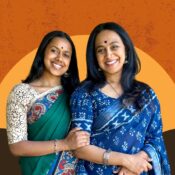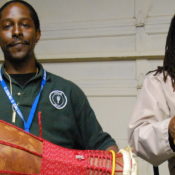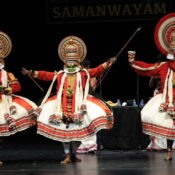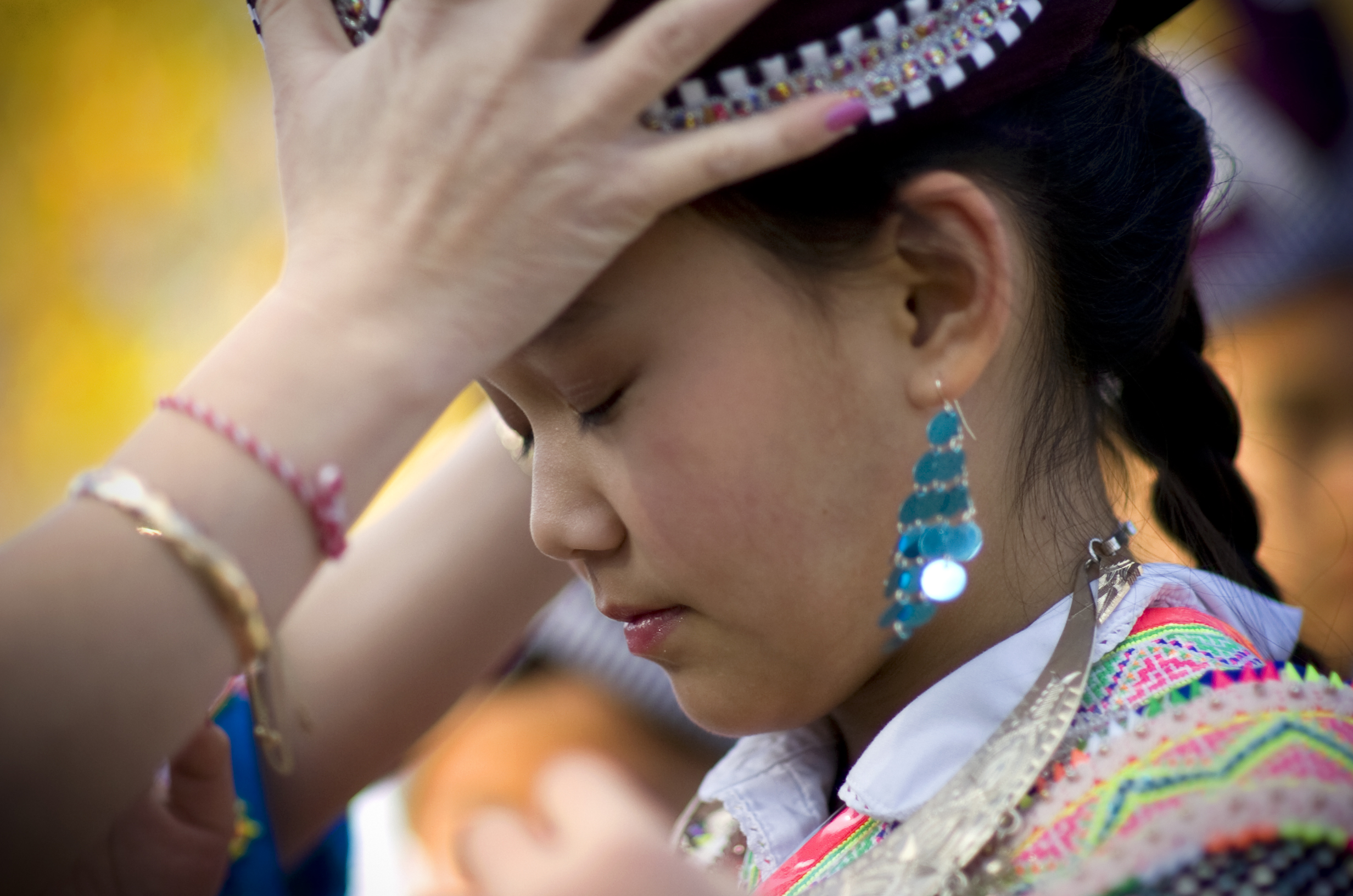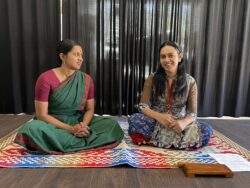
In early March, I visited the home studio of Roshni and Janhavi Pillai, a mother-daughter pair from San Jose participating in ACTA’s 2024 Apprenticeship Program. Together, they are engaged in a focused study of Kathakali, a classical South Indian dance-drama known for its expressive storytelling, elaborate costuming, and highly codified gestures and movement.
Mentor Roshni Pillai began studying Kathakali at age 7 in her hometown of Kattukulam, Kerala, India, where she comes from a rare matrilineal family of Kathakali artists. She trained under the esteemed Sri. Late Kalamandalam K Gopalakrishnan, continued her studies with Sri. Kalamandalam Keshavan Namboothiri, and is currently mentored by Sri. Kottakkal Harikumar. Over the past 25 years, Roshni has performed with renowned artists in Kerala, the U.S., and abroad, garnering several awards along the way.
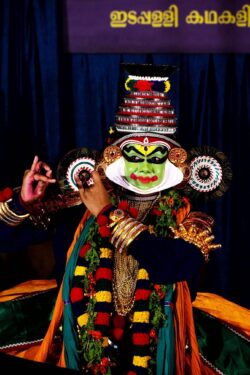
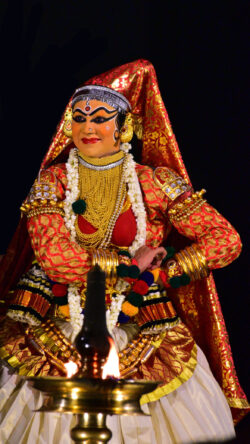
Kathakali is a full-body theater form, often performed in epic-length productions that blend mythological storytelling, poetic dialogue, and ritual. When Roshni immigrated to the U.S. in 1998, the art form had almost no presence in the Bay Area. While other classical Indian dance forms like Bharatanatyam and Kathak had well-established schools and thriving cultural ecosystems, Kathakali had no comparable infrastructure. Without a ready-made community, she continued her practice largely in isolation—balancing a full-time career as a design engineer and raising a family. Her commitment to Kathakali during those years was more than personal discipline—it was an act of cultural persistence.
Despite the lack of external resources, Roshni nurtured a rich cultural environment at home. Her daughter, Janhavi, grew up deeply immersed in their family’s Malayali heritage—speaking Malayalam fluently, participating in religious practices, and forming close bonds with her elders. This cultural fluency strengthened Janhavi’s connection to Kathakali’s expressive vocabulary, which relies not only on hand gestures (mudras), but also the subtle coordination of eyes, eyebrows, cheeks, neck, and posture—all essential tools of the form.
Now a college student, Janhavi has chosen to deepen her engagement with the tradition she’s carried since childhood. Her apprenticeship marks not a beginning, but a conscious and powerful recommitment to the lineage she was born into. In formally studying with her mother, she’s embracing a rare opportunity to learn from a living wellspring of cultural knowledge—positioning herself as a next-generation practitioner in an evolving tradition.

In the past year, Janhavi has traveled to Kerala to perform in full Kathakali costume alongside her mother and her mother’s teacher—an experience that further grounded her connection to the form’s roots. She has also performed with visiting artists in the Bay Area courtesy of Thapasya Arts, gaining exposure to the full rigor of ensemble performance.
Janhavi is currently studying the role of Krishna in Rukmiṇīswayamvaram, a Kathakali play drawn from the Bhagavata Purana, which recounts the story of Krishna’s marriage to Rukmiṇī. This role is considered one of the more technically rich portrayals of Krishna within the Kathakali repertoire, as it showcases a wide range of expressive and physical demands.
A defining feature of this role is its interplay between lyrical verses (padams) and kalaśams—pure dance sequences that punctuate the narrative. Each kalaśam responds to the emotional trajectory of the scene: starting slowly and devotional, then building in speed and intensity as Krishna prepares to rescue Rukmiṇī. These rhythmic passages demand tremendous stamina and precision from the performer.
Even preparing for performance requires mastery beyond movement. Janhavi noted that dressing for Kathakali often involves a dedicated costume artist to assemble the elaborate attire, ensuring every detail supports the character’s dramatic presence on stage.
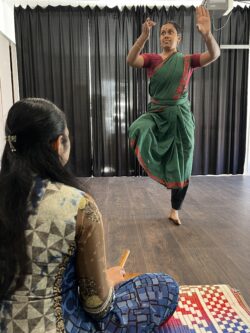
During my visit, Janhavi described how challenging it can be for general audiences—especially those unfamiliar with the original Sanskrit or Malayalam dialogue—to fully understand the performance. To make performances more legible to the public, Janhavi painstakingly translates sections of the work into English and experiments with new ways to share the narrative’s emotional depth and context with Bay Area audiences.
As someone who has spent time with many traditional artists, I’m continually struck by young adults who commit to their cultural art form. It’s common for children to grow up around cultural practices, often introduced to them by their parents, only to drift away as they come of age. What’s far less common—and deeply inspiring—is when someone steps into adulthood and decides to walk forward carrying that tradition with them. Janhavi’s choice to root herself more fully in Kathakali isn’t just a personal journey: she’s actively shaping what it becomes for the next generation—and the next.
Roshni and Janhavi are participants in our 2024 Apprenticeship Program. The Apprenticeship Program is generously supported by the National Endowment for the Arts, the William and Flora Hewlett Foundation, and the Walter and Elise Haas Fund, with additional support from the Maxwell/Hanrahan Foundation and ArtPlace San Joaquin Valley.

 Aliah Najmabadi
Aliah Najmabadi
